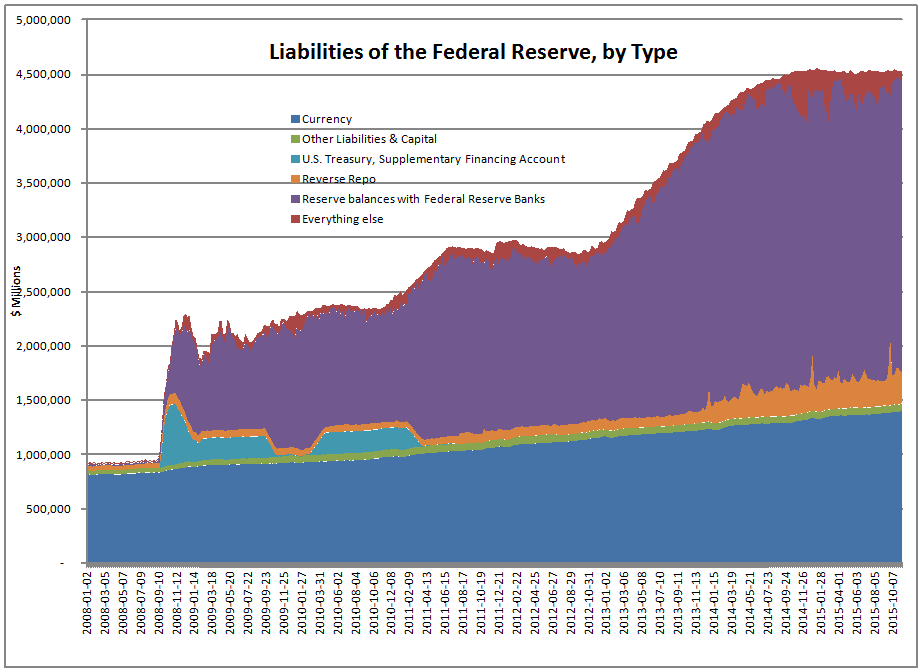A while ago I wrote two pieces called “Easy In, Hard Out.” The main idea was to illustrate the difficulties that the Federal Reserve will face in removing policy accommodation. In the past, the greater the easing cycle, the harder the tightening cycle. I don’t think this time will be any different.

Photo Credit: Lynn || Note: this picture was not picked for what its author wrote, that was a surprise to me
In the last two pieces, I showed three graphs to illustrate how the Fed’s balance sheet has changed. I’m going to show them again now, updated to 11/11/2015. Here’s the graph showing the liabilities of the Federal Reserve — i.e. what the Fed eventually has to pay back, occasionally with interest:

I’ve added a new category since last time — reverse repurchase agreements (“reverse repos”) because it has gotten big. In that category, you have money market funds (etc.) lending to the Fed to pick up a pittance in interest.
As you might note — as the balance sheet has grown, all categories of liabilities have grown. The pristine balance sheet composed mostly of currency is no more — it is only around 30% of the liabilities now. The biggest increase in reserve balances at the Fed — banks lending to the Fed to receive a pittance in interest, because they have nothing better to do for now.
I’ve considered doing an experiment, and I might do it over the next few weeks. I went to my copy of AAII Stock Investor, and pulled out the contact data for 336 banks with market capitalizations of over $100 million. I was thinking of calling 10 of them at random, and asking the following questions:









Leave A Comment